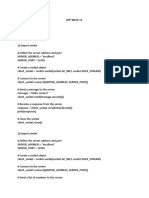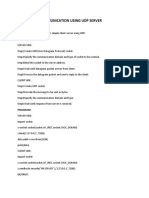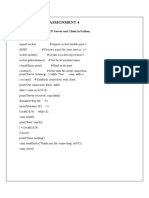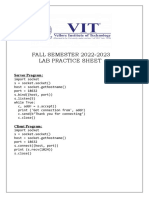0% found this document useful (0 votes)
4 views4 pagesExperiment 10
The document outlines an experiment on socket programming using TCP, detailing the aim, software requirements, and lab objectives. It provides a theoretical background on socket creation, an algorithm for implementation, and sample code for both server and client. The conclusion emphasizes the successful study and implementation of the client/server model in socket programming.
Uploaded by
ahiresonali2023Copyright
© © All Rights Reserved
We take content rights seriously. If you suspect this is your content, claim it here.
Available Formats
Download as PDF, TXT or read online on Scribd
0% found this document useful (0 votes)
4 views4 pagesExperiment 10
The document outlines an experiment on socket programming using TCP, detailing the aim, software requirements, and lab objectives. It provides a theoretical background on socket creation, an algorithm for implementation, and sample code for both server and client. The conclusion emphasizes the successful study and implementation of the client/server model in socket programming.
Uploaded by
ahiresonali2023Copyright
© © All Rights Reserved
We take content rights seriously. If you suspect this is your content, claim it here.
Available Formats
Download as PDF, TXT or read online on Scribd
/ 4


























































